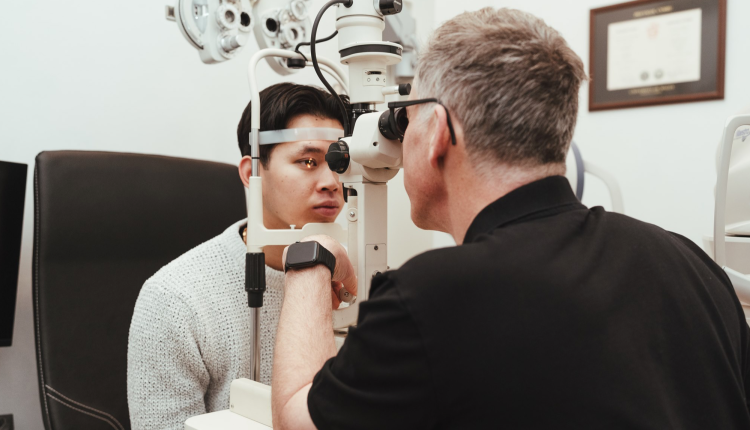Macular Degeneration Warning Signs: Sevenoaks Expert Explains When to Get Tested
You squint at your mobile phone, holding it further away to read the text clearly. The newspaper seems blurrier than usual, and you need extra lights when reading. These changes might signal age-related macular degeneration, not just normal ageing.
Macular degeneration develops gradually without obvious early symptoms. Most people dismiss subtle vision changes as old age, so they ignore the need to get an eye test. They don’t realise these changes could indicate a serious condition affecting their central vision. By the time symptoms become clear, it’s often too late.
Normal Aging or Vision Issues?
It’s important to know the difference between normal age-related vision loss and age-related macular degeneration (AMD). Watch for difficulty reading fine print, needing brighter lights for close tasks, trouble recognising faces at distance, and straight lines appearing wavy. You might even notice a blurry or dark spot in your central vision when reading or watching television.
Dry vs Wet AMD
Two types of macular degeneration affect your eyes differently. Dry AMD develops when the macula thins over time and small yellow deposits called drusen build up beneath the retina. This type progresses slowly and accounts for 90% of cases.
Wet AMD happens when abnormal blood vessels grow under the retina and leak fluid or blood. This type causes rapid vision loss and needs immediate treatment.
You need regular eye tests after age 50 because macular degeneration risk increases significantly. Don’t wait for your next routine appointment if you notice warning signs. Early detection makes a real difference in managing the condition and saving your vision.
The good news is that we now have technology to detect AMD earlier than ever before.
OCT Scanning
OCT scanning has changed how eye specialists detect macular degeneration. This advanced technology uses light waves to create detailed pictures of your retina’s layers. The scan shows the macula’s structure and reveals changes before they affect your sight. OCT scans can spot both wet and dry AMD accurately, making them the gold standard for diagnosis.
The OCT eye test takes just five to ten minutes and doesn’t hurt. You sit in front of the machine and rest your chin on a support while it scans your eye. Some people receive dilating drops to get the most accurate results. The test shows drusen deposits, retinal thinning, fluid leaks, and abnormal blood vessels that indicate macular degeneration.
Eyelines Opticians in Sevenoaks uses this cutting-edge OCT technology to help patients maintain healthy vision. The independent practice has served Kent families since 1985, combining personalised care with advanced diagnostic equipment. Their team can detect macular degeneration early and monitor any changes over time.
Book an appointment with a qualified optician if you’re worried about vision changes or haven’t had an eye test recently. Early detection and monitoring help preserve your sight and maintain your quality of life.



Comments are closed.